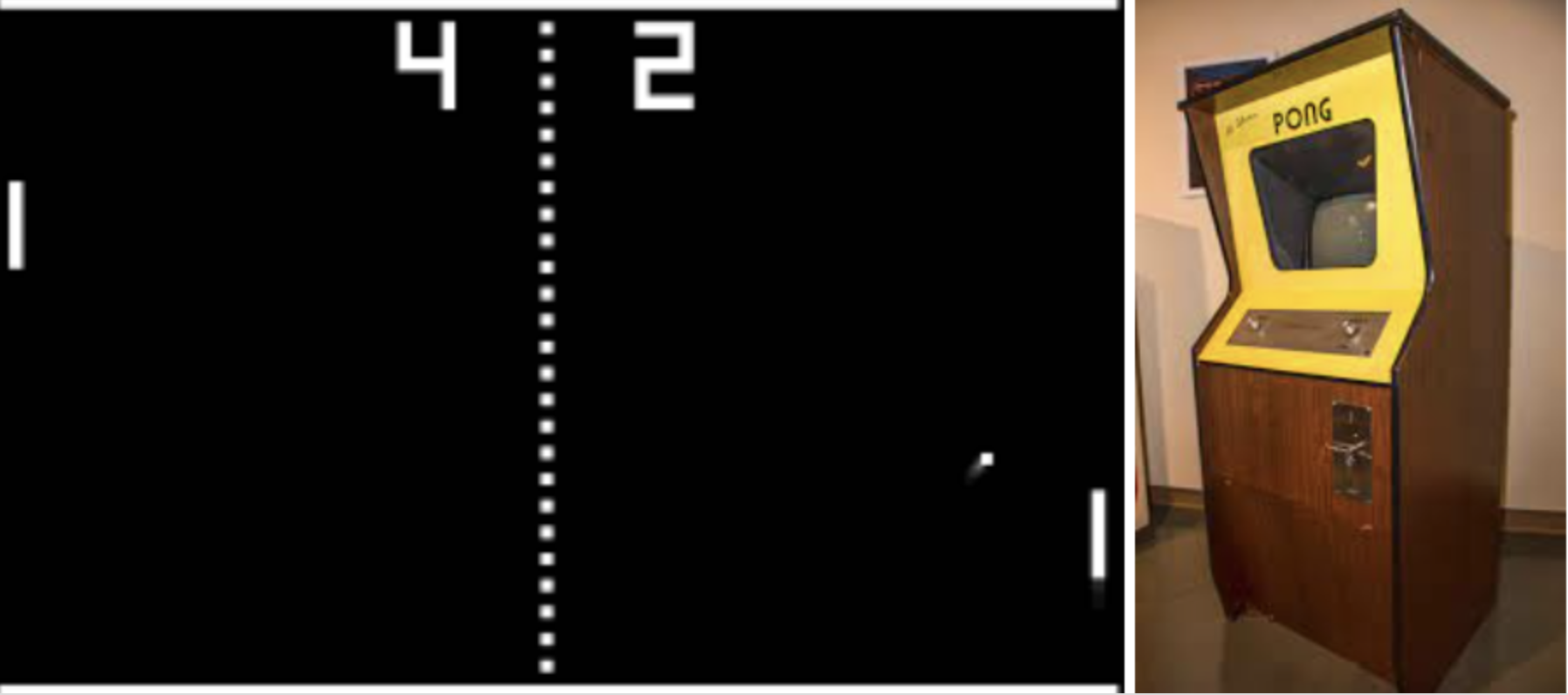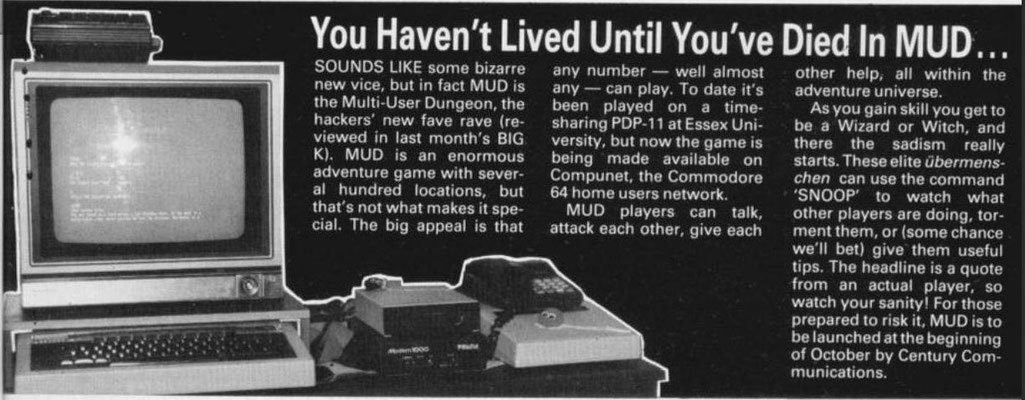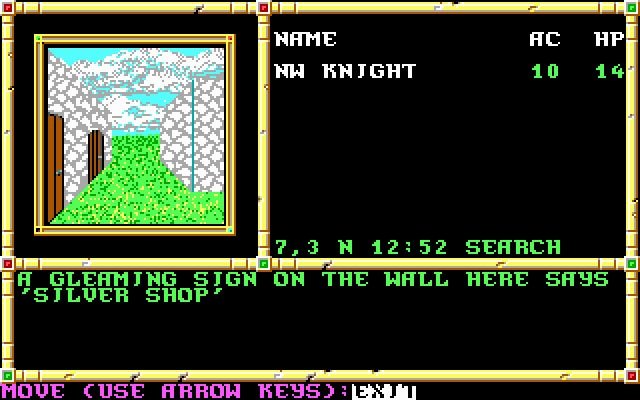What Happened to MMOs? Part i
Over the last few weeks, we’ve been putting out feelers for the types of content you would all like to see from us and got a resounding YES when it comes to sharing what we’ve learned about video games, the music industry, wider entertainment trends, our predictions for the future, and plans to reshape the entertainment industry to support all creatives
To kick things off, we’ve explored the history of video games and MMOs (massively multiplayer online games). Before we go further, massive thank you to our sources Never Knows Best, No Clip, Death by Video Game and Acquired.
This is an overview of what we’ve learned, including key insights and predictions for the future of the genre in a 4 part bite-sized blog posts covering:
People Want to Play and Have Fun: the First Video Games
The Rise of MMOs
The Fall of MMOs
What’s Next for This Genre
Part One- People Want to Play and Have Fun: the First Video Games
In 1970, video games were barely a thing, early mainframes and minicomputers were entering the market, although at hefty price tags of $18,000, far too expensive for your average consumer.
Then in1972 Pong, the first video game, was released by game manufacturer Atari. The game had no code. It didn’t use a CPU or any software at all. It was made using pure physical electronics, timers, and hardware.
Pong gameplay screenshot (left) and Pong arcade cabinet (right).
💡 When the prototype of Pong was ready, Atari set it up in a bar for testing. The next day, the bar called asking them to take it away because it wasn’t working. When Atari arrived to pick it up, they found the problem right away: the coin box was jammed full of quarters. It simply could not keep up with the demand.
Then, around 1980, the first multiplayer game was released. It had no graphics. Players simply typed text to interact with other players in an imaginary virtual world. This game was called MUD 1.
The 1980s also saw the release of slightly more sophisticated games with basic avatars in very basic graphical environments (ex. Adventure and Rogue).
Magazine Review - Big K (1984)
💡M.U.D. stands for Multi-User Dungeon/Dimension, or essentially, multiplayer virtual environments. In a MUD you are a character that moves either by typing directions or using the mouse to point in the direction desired
💡This game came out about 15 years before email was widely adopted by the public. Even without any graphics, people just wanted to connect with like minded individuals, all while embarking on a mutual journey: this text based adventure. Even this very basic game built a community where people could have fun and make friends. The first MMOs amplified this concept (massively!!).
Neverwinter Nights, Screenshots from Dungeon Crawlers.
Then, the 1990s marked a decade of innovation in video games where a transition was made from sprite based graphics (2D bitmaps) to 3D graphics, giving birth to the MMO genre.
💡 The 1990s gave rise to a new genre of video games. Recall that MUDs were multiplayer text based adventure games. With the introduction of graphics MMOs, or graphic adventure games, emerged.
For the first time, game developers could make large, multiplayer worlds, although these were still played mostly by university students who had access to computers. Neverwinter Nights was the first MMORPG (massively multiplayer role playing game) to be released with graphics.
💡 These early multiplayer games were simple. With limited mechanics and graphics, games that brought the player’s imagination to life, connected them with others, and were based around a fun story or play mechanic, retained an enthusiastic audience. These three principles of game design are timeless must haves for a successful release.
However, in the 90s it was still challenging for people to get online, and graphics were severely restricted by the need to support modem data transfer rates as slow as 300 bits per second. Plus, it was expensive! AOL billed $6/hr (or $12/hr with inflation rates). Incredibly, people would still queue up to login and even pay while queuing. Eventually, AOL included Neverwinter Nights in its subscription package, as the game was driving the adoption of its service and online communications.
Near the end of its run in 1997, the game had 115,000 players and typically hosted 2,000 concurrent players during prime evening hours, a 4,000% increase over 199!
💡A new method for distributing video games, which is also pay per hour of use, is called pixel streaming. Visuals are rendered on a remote GPU, and then streamed to your device. This is what Google Stadia and NVIDIA GForce offer on a subscription based model. When it comes to Ristband, players can either download our experience, or opt in for pixel streaming.
1997 Ultima Online screenshot via Giant Bomb
Then, in 1997 Ultima Online was released, a fantasy massively multiplayer online role-playing game. It proved the commercial viability of the genre, reached millions of users, and was the fastest selling video game EA (Electronic Arts, a video game publisher) had ever released. People didn’t have credit cards at the time, so players had to go to physical stores to purchase game play time.
Ultima Online was designed as a virtual world first, then as a game where you choose your own path. Players could progress via time committed (this is what we call grind) and skills acquired. In the game, players could live their life how they wanted it to be. The promise of Ultima was that of a world where you could be who you wanted, and live your life how you wanted. It was the ultimate simulation of life without rules, in a community of like-minded individuals.
The game was able to overcome the challenges of distribution and accessibility, because it embraced the three core principles of game design: community building, storytelling, and fun!
Looking back, Ultima Online was more than a game, it was a virtual world filled with real people. It persisted when the player was not there and player actions had long term consequences. The more time players dedicated to the game, the more they affected the world, and in return they were rewarded simply by having a greater role in the infinitely unfolding and player driven narrative. People felt a sense of achievement in Ultima Online, they received constant positive feedback by making regular progress. In many ways, we could say that Ultima Online created a world more rewarding than our real one, drawing a dedicated and passionate player base.
💡Early MMOs focused on narrative (capturing the players imagination), and social interactions. Killing other players, while possible, was not encouraged, and even penalized.
After the release of Ultima Online, the genre exploded in popularity and growth.
Our Predictions for the Future of MMOS
Future MMOs will return to their narrative driven origins. A more diverse range of people are playing games now than ever before, excited by worlds to explore and people to meet. Gaming is more than just first person shooter games and levelling up. It's more than social media two liners that go into the abyss. MMOs are worlds where people grow up together, learn, play, and rejoice in their shared experiences.
In the future games will be distributed in an entirely new way. Downloads will be a thing of the past and content will be streamed directly to a user's device using pixels streaming.
Your Predictions for the future of mmos
Send us your predictions and we’ll add them to our list (with attribution and a a link to your social channel of choice). Message us on social media, or email us at info(at)ristband.co.
Want to know what happens next? Stay tuned for next week’s blog post on the rise of MMOs.
Questions or comments? Can't wait to hear what you think we've got right, and what might be drastically different!! Let us know on social media:




